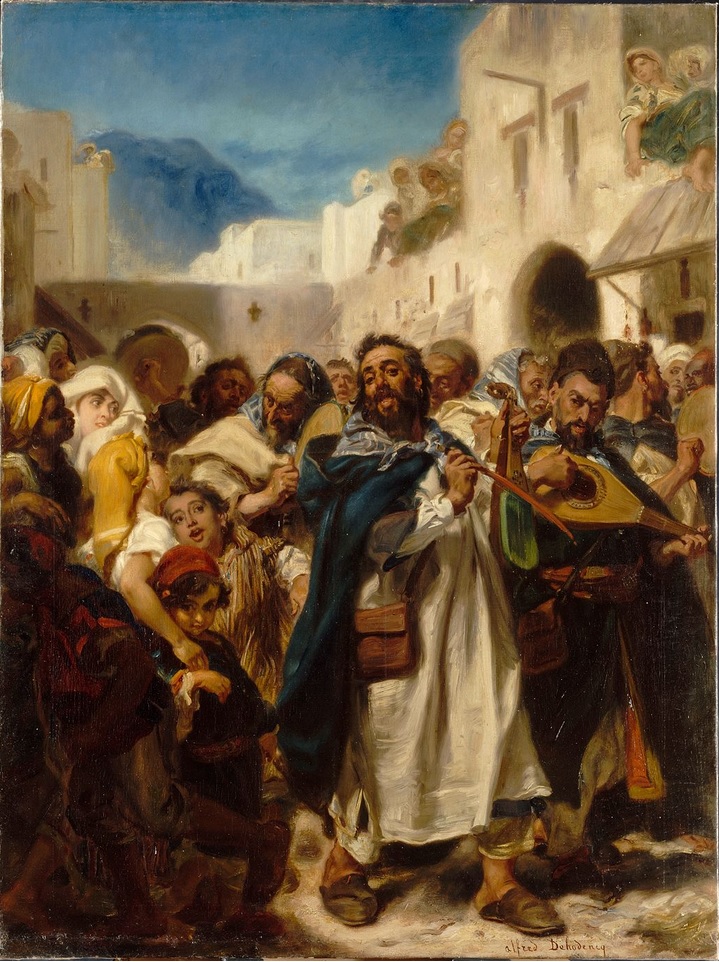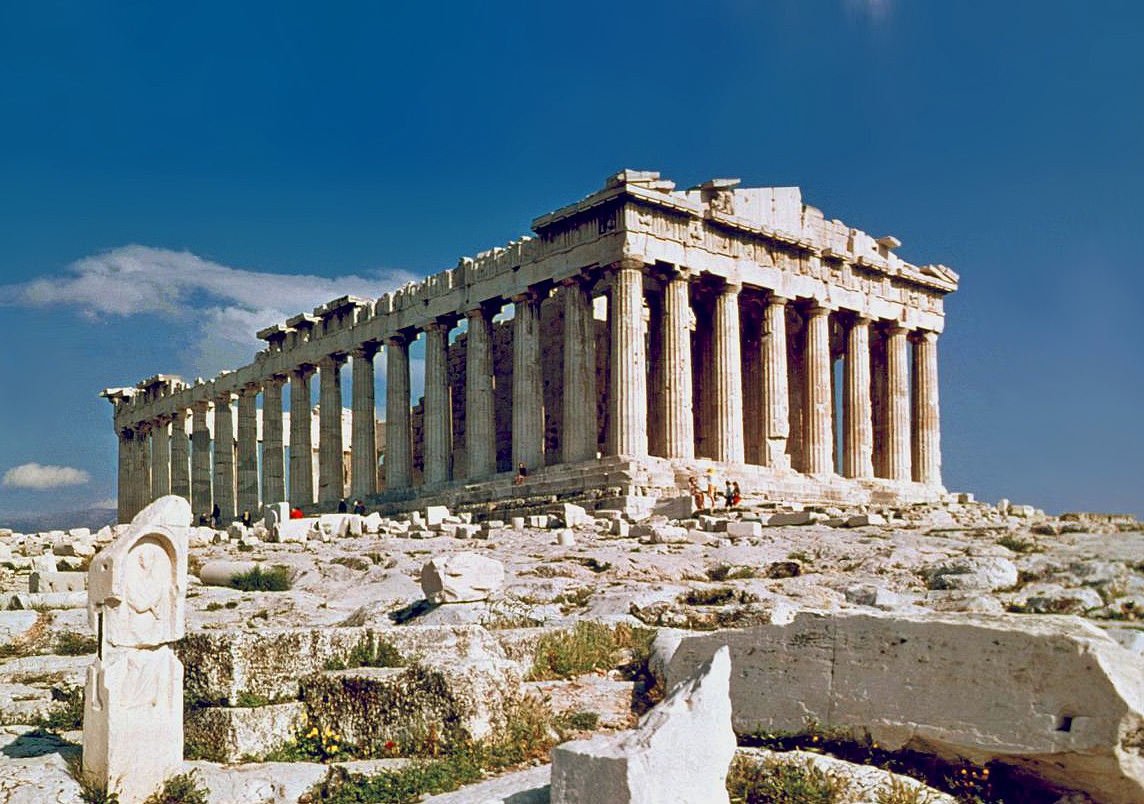|
Ethnosymbolism
Ethnosymbolism is a school of thought in the study of nationalism that stresses the importance of symbols, myths, values and traditions in the formation and persistence of the modern nation state. As a critique of modernist theories of nationalism, ethnosymbolism defends the antiquity and ''la longue durée'' of nations while modernists believe nations are a purely modern phenomenon. John A. Armstrong, Anthony D. Smith and John Hutchinson are regarded as important theorists of ethnosymbolism. The term was first used as "ethno-symbolist approach" in an article by Daniele Conversi, Smith's former student at the London School of Economics. However, Conversi was slightly critical, arguing: "if we focus exclusively on the power of the past and its symbols, we miss two other key features of nationalism: first, its relationship with political power, and particularly with the state; second, its crucial border-generating function". Important theorists and theories John A. Armstro ... [...More Info...] [...Related Items...] OR: [Wikipedia] [Google] [Baidu] |
John Hutchinson (academic)
John Hutchinson (born 1949) is a British academic. He is a reader in nationalism at the London School of Economics (LSE), in the Department of Government. Biography John Hutchinson was born in Warrenpoint, County Down, Northern Ireland. He graduated with an MA in modern history from the University of Edinburgh, Scotland in 1970; and his PhD in sociology in 1985 from the London School of Economics, where he was supervised by Anthony D. Smith. Academic career Before joining the LSE in 1999, Hutchinson taught in Australia at the interdisciplinary School of Humanities at Griffith University, from 1974 to 1979, and from 1986 to 1999, where he became associate professor. He is vice-president of the Association for the Study of Ethnicity and Nationalism and deputy editor of ''Nations and Nations and Nationalism''. In addition, he sits on the advisory boards of the Institute for the Advancement of the Social Sciences]at Boston University and of the Study Platform on Interlocki ... [...More Info...] [...Related Items...] OR: [Wikipedia] [Google] [Baidu] |
Nationalism
Nationalism is an idea and movement that holds that the nation should be congruent with the State (polity), state. As a movement, nationalism tends to promote the interests of a particular nation (as in a in-group and out-group, group of people),Anthony D. Smith, Smith, Anthony. ''Nationalism: Theory, Ideology, History''. Polity (publisher), Polity, 2010. pp. 9, 25–30; especially with the aim of gaining and maintaining the nation's sovereignty (self-governance) over its homeland to create a nation-state. Nationalism holds that each nation should govern itself, free from outside interference (self-determination), that a nation is a natural and ideal basis for a polity, and that the nation is the only rightful source of political power. It further aims to build and maintain a single national identity, based on a combination of shared social characteristics such as culture, ethnicity, geographic location, language, politics (or the government), religion, traditions and belief ... [...More Info...] [...Related Items...] OR: [Wikipedia] [Google] [Baidu] |
John Alexander Armstrong
John Alexander Armstrong Jr. (4 May 1922 – 2010) was Professor Emeritus of political science at the University of Wisconsin-Madison. Born in St. Augustine, Florida on 4 May 1922, he entered the University of Chicago at age 20 where he received both bachelor's and master's degrees. However, the date of his graduation was delayed by his enlistment in the U.S. Army in Belgium during World War II, from 1944 to 1945. Such experience appears to have certain impacts upon the direction of his academic research on nationalism in Europe afterwards. He entered Columbia University for further study in 1950 and received a Ph.D. three years later. His earlier works focus on nationalism and ideologies in Europe, especially Ukraine and Russia during the 1950s and 1960s. The most influential work of his is the path-breaking ''Nations before Nationalism'' (1982) which firstly systematically expressed the ''longue durée'' of ethnic identity and has inspired theorists of ethnosymbolism inc ... [...More Info...] [...Related Items...] OR: [Wikipedia] [Google] [Baidu] |
Mazdak
Mazdak ( fa, مزدک, Middle Persian: 𐭬𐭦𐭣𐭪, also Mazdak the Younger; died c. 524 or 528) was a Zoroastrian ''mobad'' (priest), Iranian reformer, prophet and religious reformer who gained influence during the reign of the Sasanian emperor Kavadh I. He claimed to be a prophet of Ahura Mazda and instituted social welfare programs. Mazdakism Mazdak was the chief representative of a religious and philosophical teaching called Mazdakism, which he viewed as a reformed and purified version of Zoroastrianism,Shaki, Mansour. 1985. The cosmogonical and cosmological teachings of Mazdak. Papers in Honour of Professor Mary Boyce, Acta Iranica 25, Leiden, 1985, pp. 527–43. although his teaching has been argued to display influences from |
Eurocentrism
Eurocentrism (also Eurocentricity or Western-centrism) is a worldview that is centered on Western civilization or a biased view that favors it over non-Western civilizations. The exact scope of Eurocentrism varies from the entire Western world to just the continent of Europe or even more narrowly, to Western Europe (especially during the Cold War). When the term is applied historically, it may be used in reference to an apologetic stance toward European colonialism and other forms of imperialism. The term "Eurocentrism" dates back to the late 1970s but it did not become prevalent until the 1990s, when it was frequently applied in the context of decolonisation and development and humanitarian aid that industrialised countries offered to developing countries. The term has since been used to critique Western narratives of progress, Western scholars who have downplayed and ignored non-Western contributions, and to contrast Western epistemologies with Indigenous ways of knowi ... [...More Info...] [...Related Items...] OR: [Wikipedia] [Google] [Baidu] |
Jews
Jews ( he, יְהוּדִים, , ) or Jewish people are an ethnoreligious group and nation originating from the Israelites Israelite origins and kingdom: "The first act in the long drama of Jewish history is the age of the Israelites""The people of the Kingdom of Israel and the ethnic and religious group known as the Jewish people that descended from them have been subjected to a number of forced migrations in their history" and Hebrews of historical Israel and Judah. Jewish ethnicity, nationhood, and religion are strongly interrelated, "Historically, the religious and ethnic dimensions of Jewish identity have been closely interwoven. In fact, so closely bound are they, that the traditional Jewish lexicon hardly distinguishes between the two concepts. Jewish religious practice, by definition, was observed exclusively by the Jewish people, and notions of Jewish peoplehood, nation, and community were suffused with faith in the Jewish God, the practice of Jewish (religious ... [...More Info...] [...Related Items...] OR: [Wikipedia] [Google] [Baidu] |
Jewish Culture
Jewish culture is the culture of the Jewish people, from its formation in ancient times until the current age. Judaism itself is not a faith-based religion, but an orthoprax and ethnoreligion, pertaining to deed, practice, and identity. Jewish culture covers many aspects, including religion and worldviews, literature, media, and cinema, art and architecture, cuisine and traditional dress, attitudes to gender, marriage, and family, social customs and lifestyles, music and dance. Some elements of Jewish culture come from within Judaism, others from the interaction of Jews with host populations, and others still from the inner social and cultural dynamics of the community. Before the 18th century, religion dominated virtually all aspects of Jewish life, and infused culture. Since the advent of secularization, wholly secular Jewish culture emerged likewise. History There has not been a political unity of Jewish society since the united monarchy. Since then Israelite populati ... [...More Info...] [...Related Items...] OR: [Wikipedia] [Google] [Baidu] |
Culture Of Greece
The culture of Greece has evolved over thousands of years, beginning in Minoan civilization, Minoan and later in Mycenaean Greece, continuing most notably into Classical Greece, while influencing the Roman Empire and its successor the Byzantine Empire. Other cultures and states such as the Frankokratia, Frankish states, the Ottoman Empire, the Venetian Republic and House of Wittelsbach, Bavarian and House of Glücksburg, Danish monarchies have also left their influence on modern Greek culture, but historians credit the Greek War of Independence with revitalising Greece and giving birth to a single entity of its multi-faceted culture. Greece is widely considered to be the cradle of Western culture and democracy. Modern democracies owe a debt to Greek beliefs in government by the people, trial by jury, and equality under the law. The ancient Greeks pioneered in many fields that rely on systematic thought, including biology, geometry, history, philosophy, and physics. They introdu ... [...More Info...] [...Related Items...] OR: [Wikipedia] [Google] [Baidu] |
School Of Thought
A school of thought, or intellectual tradition, is the perspective of a group of people who share common characteristics of opinion or outlook of a philosophy, discipline, belief, social movement, economics, cultural movement, or art movement. History The phrase has become a common colloquialism which is used to describe those that think alike or those that focus on a common idea. The term's use is common place. Schools are often characterized by their currency, and thus classified into "new" and "old" schools. There is a convention, in political and philosophical fields of thought, to have "modern" and "classical" schools of thought. An example is the modern and classical liberals. This dichotomy is often a component of paradigm shift. However, it is rarely the case that there are only two schools in any given field. Schools are often named after their founders such as the "Rinzai school" of Zen, named after Linji Yixuan; and the Asharite school of early Muslim philoso ... [...More Info...] [...Related Items...] OR: [Wikipedia] [Google] [Baidu] |
Sassanid Empire
The Sasanian () or Sassanid Empire, officially known as the Empire of Iranians (, ) and also referred to by historians as the Neo-Persian Empire, was the last Iranian empire before the early Muslim conquests of the 7th-8th centuries AD. Named after the House of Sasan, it endured for over four centuries, from 224 to 651 AD, making it the longest-lived Persian imperial dynasty. The Sasanian Empire succeeded the Parthian Empire, and re-established the Persians as a major power in late antiquity alongside its neighbouring arch-rival, the Roman Empire (after 395 the Byzantine Empire).Norman A. Stillman ''The Jews of Arab Lands'' pp 22 Jewish Publication Society, 1979 International Congress of Byzantine Studies ''Proceedings of the 21st International Congress of Byzantine Studies, London, 21–26 August 2006, Volumes 1–3'' pp 29. Ashgate Pub Co, 2006 The empire was founded by Ardashir I, an Iranian ruler who rose to power as Parthia weakened from internal strife and wars with ... [...More Info...] [...Related Items...] OR: [Wikipedia] [Google] [Baidu] |
Assyria
Assyria (Neo-Assyrian cuneiform: , romanized: ''māt Aššur''; syc, ܐܬܘܪ, ʾāthor) was a major ancient Mesopotamian civilization which existed as a city-state at times controlling regional territories in the indigenous lands of the Assyrians from the 21st century BC to the 14th century BC, then to a territorial state, and eventually an empire from the 14th century BC to the 7th century BC. Spanning from the early Bronze Age to the late Iron Age, modern historians typically divide ancient Assyrian history into the Early Assyrian ( 2600–2025 BC), Old Assyrian ( 2025–1364 BC), Middle Assyrian ( 1363–912 BC), Neo-Assyrian (911–609 BC) and post-imperial (609 BC– AD 630) periods, based on political events and gradual changes in language. Assur, the first Assyrian capital, was founded 2600 BC but there is no evidence yet discovered that the city was independent until the collapse of the Third Dynasty of Ur in the 21st century BC, when a line of independent ... [...More Info...] [...Related Items...] OR: [Wikipedia] [Google] [Baidu] |




